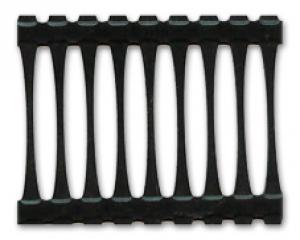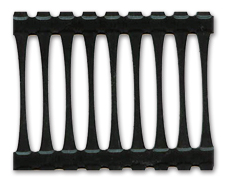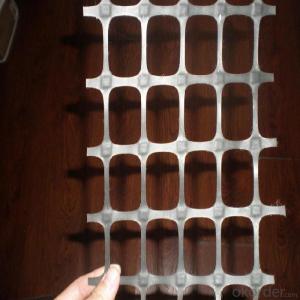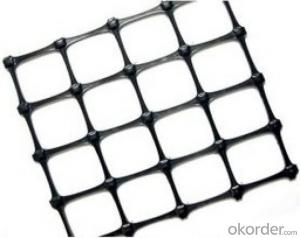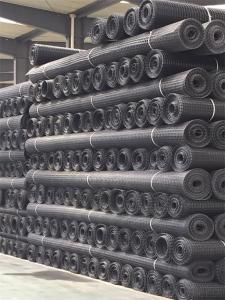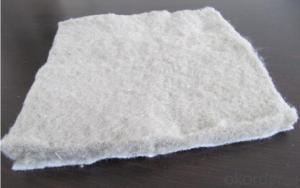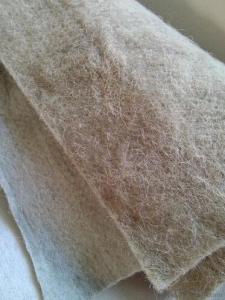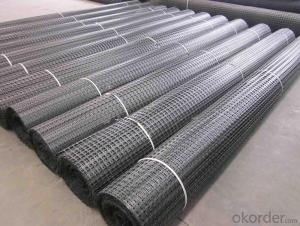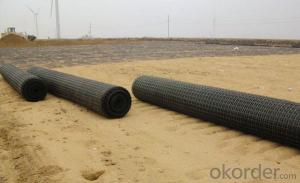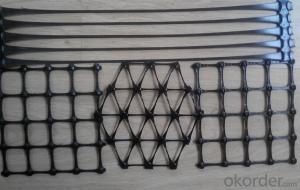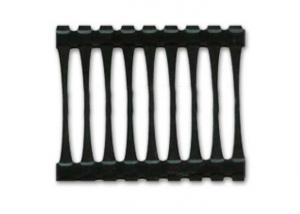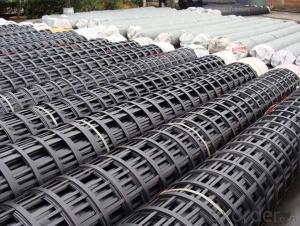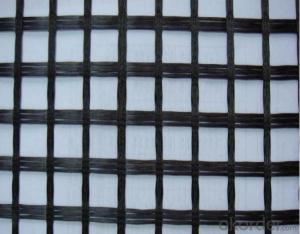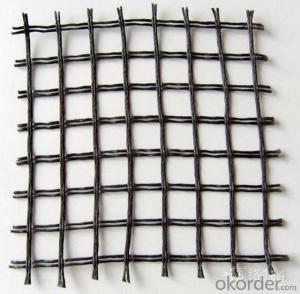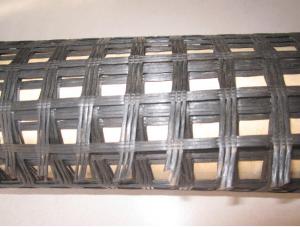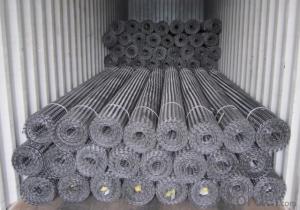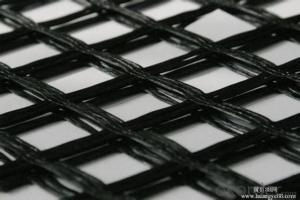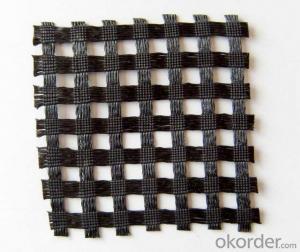PP/HDPE One-Way Plastic Geogrids for Asphalt
- Loading Port:
- Qingdao
- Payment Terms:
- TT OR LC
- Min Order Qty:
- 1 m²
- Supply Capability:
- 100000000 m²/month
OKorder Service Pledge
OKorder Financial Service
You Might Also Like
One-Way Plastic Geogrid Products
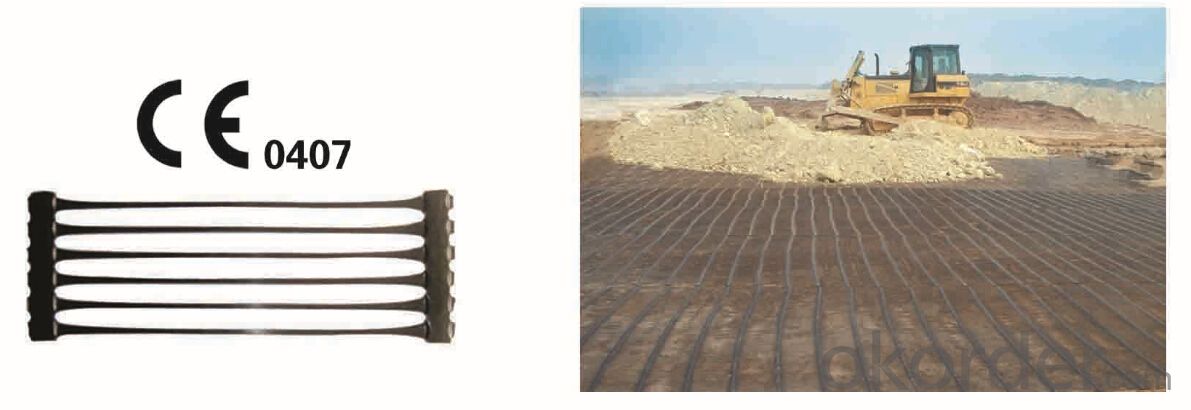
Products overview:
Unidirectional geogrid is made of polymer by extrusion pressure into sheet rules of mesh again, then the longitudinal tensile and into. The directional linear polymer into state and in the process of uniform distribution, long oval mesh nodes with high intensity is the structure integrity. This kind of structure has a very high tensile strength and tensile modulus, especially my company this kind of product is more than the international level of high early (elongation at 2% to 2%), tensile strength and tensile modulus. To the soil provides ideal assumption of the force and the spread of the chain system, the product tensile strength (> 150 mpa), adapt to all kinds of soil, is currently widely used reinforcement reinforcement material.
Product features:
1, strengthen roadbed, can effectively allocate diffusion load, improve the stability and bearing capacity of subgrade, prolong service life.
2, can withstand greater alternating load;
3, prevent subgrade material loss caused by the embankment, cracking;
4, make the file after the wall of the filled soil bearing capacity increase, reduce the pressure of the retaining wall, save costs and prolong service life, and reduce maintenance costs;
5, spray anchor concrete construction method for slope maintenance, not only can save 30% - 50% of the investment, but also can shorten the time limit for a project more than double;
6, adding geogrid in highway roadbed and road surface, reduces the deflection, reduce furrow, delay cracking 3 to 9 times, structure layer thickness can be reduced by 36%;
7, used in a variety of soil, no need different materials, save work time;
8, easy construction, can greatly reduce the construction cost.
Product application:
1, mainly used for retaining wall, abutment, steep slope engineering, etc.;
2, retaining wall and the abutment belongs to the mechanical structure, all bear the external loads, the active earth pressure, the upper structure of the load, temperature stress, such as reinforced material under great tension for a long time, and again and again under the action of dynamic load, the molecular structure of the material to produce fatigue, its performance attenuation, accelerate the ageing of the grille, to avoid structure due to the creep in reinforcement material and produce large deformation, should choose to unidirectional geogrid of high-density polyethylene as raw material.
Product specifications:
TGDG35 TGDG50 TGDG80 TGDG110 TGDG120
- Q: What is the effect of polymer type on geogrid behavior?
- The effect of polymer type on geogrid behavior can vary significantly. Different polymers have different physical and mechanical properties, which can impact the strength, stiffness, and durability of the geogrid. For example, a geogrid made of a high-density polyethylene (HDPE) polymer may exhibit higher tensile strength and better resistance to environmental factors compared to a geogrid made of a polypropylene (PP) polymer. Ultimately, the choice of polymer type for a geogrid depends on the specific engineering requirements and the expected conditions in which it will be used.
- Q: Can geogrids be used for reinforcement in railway track construction?
- Yes, geogrids can be used for reinforcement in railway track construction. Geogrids provide additional support and stability to the track, helping to distribute loads and prevent settlement or deformation of the track structure. They are particularly effective in stabilizing the subgrade and improving the overall performance and longevity of the railway track.
- Q: What is the recommended depth of geogrid installation?
- The recommended depth of geogrid installation varies depending on the specific project requirements and soil conditions. However, in general, it is recommended to install geogrids at a depth of around 1 to 2 feet below the ground surface. This depth allows for proper interaction between the geogrid and the surrounding soil, maximizing its effectiveness in providing reinforcement and stability.
- Q: What is the recommended overlap distance for geogrid seams?
- The recommended overlap distance for geogrid seams varies depending on the specific application and manufacturer's guidelines. However, in general, a minimum overlap distance of 12-18 inches is often recommended to ensure proper connection and strength of the geogrid.
- Q: Where the geogrid is the cheapest! Plastic fiber polyester fiberglass geogrid there?
- The geogrid grille is made of polypropylene, PVC polymer and thermoplastic or molded by two-dimensional grid or a certain height of the three-dimensional mesh screen, when used as a civil engineering, called geogrid.
- Q: How much investment is needed for the grid cloth on the production site
- The mesh cloth is made of alkali or alkali free glass fiber yarn, which is coated with alkali resistant polymer emulsion. Mesh cloth series products: alkali resistant GRC fiberglass mesh cloth, alkali resistant wall mesh and stone mesh cloth, marble back mesh cloth.
- Q: Can geogrids be used in retaining wall drainage systems?
- Yes, geogrids can be used in retaining wall drainage systems. Geogrids provide reinforcement to the soil and help to prevent soil erosion and slippage. They can be used to enhance the stability and longevity of retaining walls by improving the drainage system, reducing hydrostatic pressure, and allowing water to flow through the soil behind the wall.
- Q: Can geogrids be used in stabilization of river training structures?
- Yes, geogrids can be used in the stabilization of river training structures. Geogrids are commonly used in civil engineering projects to reinforce and stabilize soil and structures. In the case of river training structures, geogrids can be used to prevent erosion and provide stability to the riverbanks, retaining walls, and other structures. They can enhance the structural integrity and longevity of these structures, making them an effective solution for river stabilization.
- Q: What is the difference between gsl30-hdpe geogrid and 30*30kn/m?
- The introduction of the grille, two-way geogrid 1, the application of the grid two-way geogrid is mainly used in embankment engineering, subgrade engineering, soft foundation treatment engineering or as reinforced retaining wall of the secondary reinforcement grid.
- Q: What are the differences between uniaxial and biaxial geogrids?
- Uniaxial geogrids have strength and stiffness in one direction, making them ideal for applications that require reinforcement in a single direction. Biaxial geogrids, on the other hand, have strength and stiffness in both directions, allowing them to provide reinforcement and stability in multiple directions. This makes biaxial geogrids more versatile and suitable for a wider range of applications, including soil stabilization, slope reinforcement, and retaining wall construction.
Send your message to us
PP/HDPE One-Way Plastic Geogrids for Asphalt
- Loading Port:
- Qingdao
- Payment Terms:
- TT OR LC
- Min Order Qty:
- 1 m²
- Supply Capability:
- 100000000 m²/month
OKorder Service Pledge
OKorder Financial Service
Similar products
Hot products
Hot Searches
Related keywords
